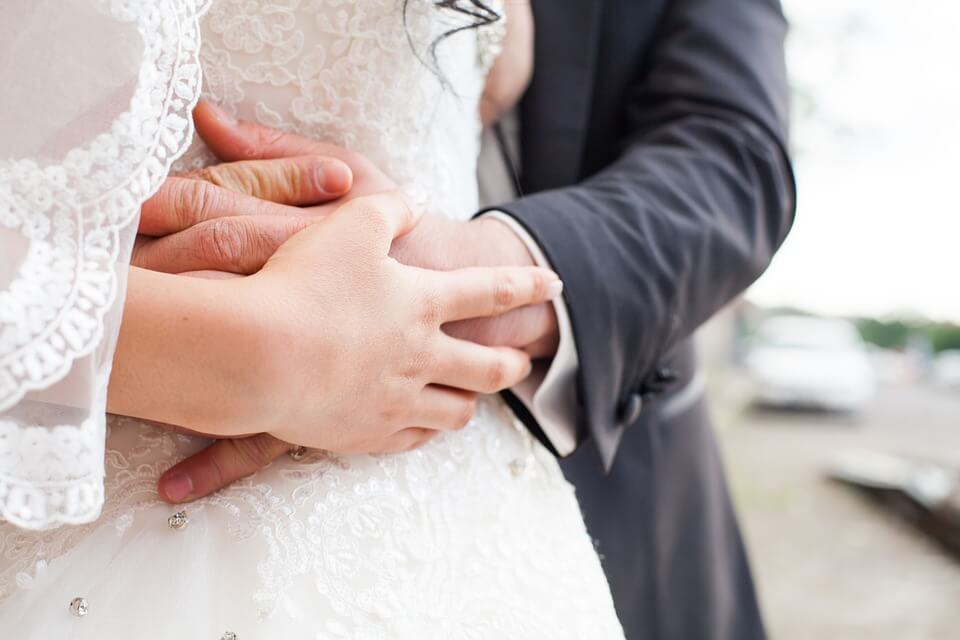Seashore weddings are magical and breezy. Nothing compares to the atmosphere of a beach sunset with the gentle sound of waves in the background. However, planning a nautically-themed wedding can be far from carefree while trying to reduce costs and please your guests. Sure, pearl wedding earrings and light clothes are a must, together with serious amounts of mosquito spray. But what else?
How to Keep a Seashore Wedding Traditional
Keeping hundreds or thousands of years old practices and symbols in a modern wedding is a challenge. Here’s how to focus on the big picture behind common wedding elements and their meaning:
Favors
As a seemingly indispensable expense nowadays, favors began their history in 16th century France when aristocrats would offer bonbonnières. The small jewel-encrusted boxes containing sugared nuts or other sweets were offered as a symbol of care and appreciation towards wedding guests, since sweets were considered a healthy treat.
It is not clear whether the gesture emerged in other countries naturally or spread through word-of-mouth to others, but many cultures practiced this tradition worldwide. Sugared almonds were common among many cultures and represented the bittersweet nature of marriage.
The belief of the bride and everything that she touches being lucky was also widespread and a reason why favors were offered. Today, they can imply anything from sweets to souvenirs.
Favor Ideas for a Beach Wedding
- Sunglasses;
- Saltwater sweets;
- Coupons for boat rides;
- Different types of nautically-themed glasses or other accessories;
- Shells and pearls decorative arrangements.
Pearls
As a natural resource, pearls have been around for a long time. Many ancient cultures believed they were magical, while the Chinese sought their protection from fire and dragons. During the Dark Ages, knights would wear pearl necklaces of their fiancées for protection against evil spirits. Other ancient cultures associated pearls with chastity and modesty.
Given that they were rare and expensive in many places, they were also a symbol of wealth. It is said that Cleopatra bet Mark Antony she could consume the wealth of a nation within a meal, and drank a glass of wine with a pearl dissolved in it to prove it.
The first documented use in jewelry associated with love and marriage comes from Ancient Greece. However, lower classes were restricted from wearing pearls. England’s 16th century is known as the Pearl Age because of their success among wealthier classes. Pearl wedding earrings became increasingly more popular ever since. Asian countries created cultured pearls in the 19th century and made them more available to the public.
Pearl jewelry comes naturally with nautical or seashore weddings. There are no ifs or buts about it. From pearl wedding earrings to watch bracelets, pearls will always add grace and charm to a bride.
Wedding Rings
Common in many cultures, rings always represent eternity. Around 5,000 years ago, ancient Egyptians exchanged hemp or reeds rings during the wedding to symbolize their never-ending love. They wore their rings on their left ring fingers, which they thought connected with their hearts through Vena Amoris. In 16th and 17th century Europe, men would offer their beloveds a “gimmel ring” comprised of two metal interlocking bands. After the wedding, the bride wore both of the rings on her ring finger.
In the last few centuries, wedding rings became more popular. By the 1940s, they were the most popular jewelry in specialized stores. The famous “Breakfast at Tiffany’s” movie further endorsed the business during the ‘50s. However, their deep meaning lingered along: they stand as a symbol of the couple’s eternal love and devotion.
Nautical wedding rings are usually engraved with chain, anchor, or rope models for seashore weddings. However, classic wedding rings are also common. Sea glass jewelry is popular among young couples who decide to go with a seashore wedding.
Bouquet
Earliest bouquets from ancient times incorporated herbs and grains to banish evil spirits during a wedding. Some cultures introduced aromatic plants like orange blossoms or garlic flowers to further enhance the effect.
However, flowers are also a symbol of fertility. In Ancient Greece and Roman Empire, the wedded pair would wear garlands symbolizing fruitfulness, hope, and renewal. Celts used ivy, heather, and thistle to make their wedding bouquets. During the 14th century, brides and things they touched were considered lucky, and this is how the bouquet toss became a tradition.
Flower Ideas for Nautical Weddings
- Blue and white flowers;
- Lavender or other seashore flowers;
- Algae leaves.
Seaside Honeymooning Locations
Honeymooning is a hundreds of years old practice that was first mentioned in an English writing in 1546 as a period of time couples would get closer after the wedding. It only started to be considered a holiday in the early 19th century, when the young couple visited relatives after the wedding.
Today, honeymoons are one of the sustaining pillars of the tourism industry: a staggering 1.4 million U.S. couples spend an average of $4,500 on their honeymoon each year.
Seashore Honeymoon Locations:
- International destinations: Mexico, Hawaii, Jamaica, the Bahamas, Europe, Caribbean, South Pacific.
- U.S. destinations: Florida, California.
Nautical weddings sure have their charm and convenience: a quiet beach is a comfortable place to be at and certainly is more tranquil than a busy city center. If you want a relaxed and cheerful atmosphere, a seashore wedding might be for you.



